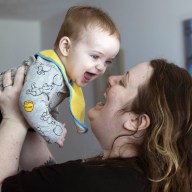 The demand for organ donations in New York outpaces the number of enrollees in the state’s registry.
The demand for organ donations in New York outpaces the number of enrollees in the state’s registry.
Credit: Getty Images
Sixteen years ago, Ira Copperman didn’t know much about organ and tissue donations.
It wasn’t until his wife’s kidney failure that he became aware of New York’s critical lack of organ donors. He discovered that there’s an ongoing struggle to get residents to register so that, if they pass on, others in their home state might live.
By 1998, Copperman’s wife was in need of a new kidney and pancreas due to complications from preexisting diabetes. The Upper West Side couple immediately dove into the rigors of the care that she needed while they waited for a donor, eventually joining the Transplant Support Organization that operates in Westchester.
“We managed,” Copperman, 69, said of the wait for his wife’s treatment. “We both wore beepers — we would wake up in the middle of the night to take blood tests.”
It took 14 months before doctors at NewYork-Presbyterian/Weill Cornell Medical Center were able to find a match for Copperman’s wife, now 68 years old and still in good health. He is now co-president of the support organization, and the couple actively works with the group to bring in new registrants into the donor database.
Generally speaking, registration isn’t necessary for a person to donate their remains for those in need, but it does serve as a legal declaration of what the deceased’s final wishes were, explained Dr. Lloyd Ratner, a surgical director for kidney and pancreatic transplants at NewYork-Presbyterian/Columbia.
Today, more than 10,500 New Yorkers statewide are waiting for organ and tissue donations; that’s almost one-tenth of the entire national wait list. The New York Alliance for Donation estimates that the state ranks about the third in need for donations nationwide.
But at the same time, New York has consistently ranked at the bottom of the nation’s enrollment rate. While about 43 percent of the country’s eligible residents are enrolled to donate, only 22.8 percent of New York’s are signed up.
Ratner, also a board chairman with the New York Organ Donor Network, indicated that while the latest numbers are an improvement from two or three years ago, the disparity between need and availability is only getting worse.
“The demand keeps increasing, while the number of organs stays the same,” said Ratner, who treats patients in the New York City area and parts of upstate.
The resulting stakes are real for those who wait for an available match. Ratner explained that 6 to 7 percent of patients waiting for a kidney transplant alone will die within the year.
“If you have to wait for five years, which is common in most on the programs in New York, you’re talking a 30 percent chance of being dead,” he added.
But not only are New York State’s numbers well below national averages, but four of the five counties in New York City have an even lower rate of success.
Manhattan has almost 30 percent of its 1.2 million eligible residents signed up as potential donors — outdoing the state’s overall numbers. The outer boroughs, however, don’t fare as well.
As of late March, Staten Island only has about 15.5 percent of its eligible population enrolled, while Brooklyn boasts 13.75 percent enrollment. The Bronx has 11.9 percent of its qualified population are signed up.
Queens rounds out the five boroughs as having the lowest rate of enrollment. Only 11.07 percent of the 1.7 million eligible residents are in the state registry. Across the state, only Orleans County — with its 42,800 residents sandwiched between Buffalo and Rochester — has lower enrollment numbers.
Advocates have long blamed the state’s low enrollment numbers on how difficult it is for New Yorkers to sign up with the donation registry. Potential donors have to sift through a maze of websites and printouts in order to formally declare their intent to donate, a process might discourage some well-intentioned potential enrollees.
“The process to enroll is so cumbersome that a lot of people start and don’t finish,” said Aisha Tator, executive director for the New York Alliance for Donation.
She also said the state is working make the registration process as painless and transparent as possible to match the New Yorkers’ expectations.
Currently, the state offers New Yorkers a handful of ways to register as donors. All but one, however, can be done electronically.
Those interested in enrolling in the registry can go the route most commonly used by the rest of the country, which is through the Department of Motor Vehicles.
Even so, that digital enrollment option is only available for those with either a driver’s license or identification card.
Those without a license or card can go to the DMV the old-fashioned way and sign up there, or they fill out an electronic form on the state’s Department of Health website that then has to be printed signed and mailed to Albany.
The push to boost the state’s enrollment numbers, however, have resulted in new ways for residents to register for donor status. In 2009, New York began to offer organ and tissue donor enrollment through voter registration — making it the only state in the country to do so.
Patients and advocates are also looking at state lawmakers to follow through on its commitment to transfer the state registry’s administration to a nonprofit operation. It’s a move that Tator said will help modernize the system.
There’s no firm dates or details yet on how the state might begin to change over operations into the proposed public-private partnership, but Tator admitted that any changes to the process are only half the equation.
“This issue does need statewide promotion,” she said. “The donation community does outreach, but we don’t have a statewide promotional campaign, and the state didn’t put that investment in yet.”
Part of putting the message to donate on people’s radar, Ratner said, convincing New Yorkers that organ and tissue donation is about more than just one life.
“We often think about what it will do to the recipient and not what it does for the deceased and their family,” he said. “I think a lot of people find solace in the fact that something good comes out of a terrible tragedy.”
Follow Chester Jesus Soria on Twitter @chestersoria
















